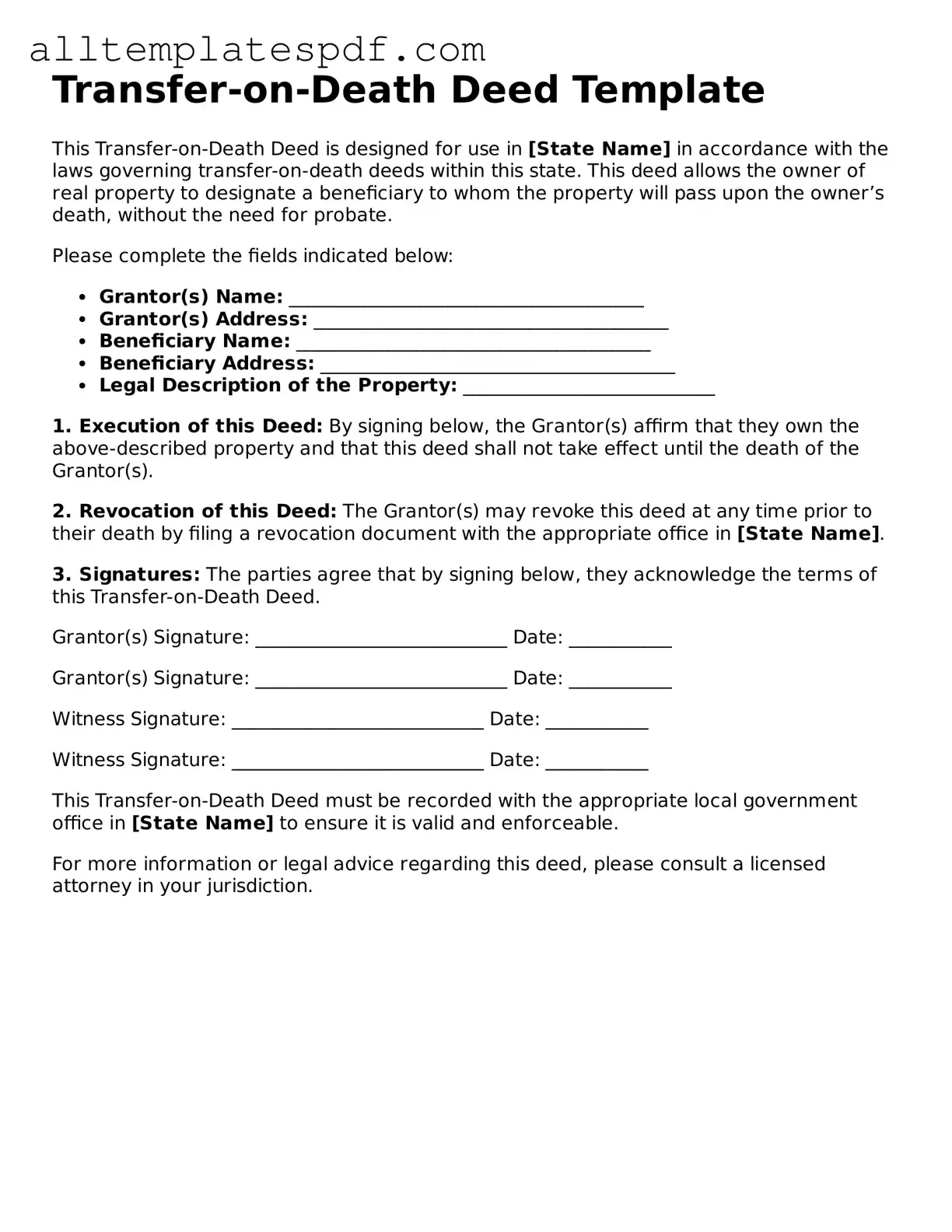When filling out a Transfer-on-Death Deed (TODD) form, individuals often make several common mistakes that can lead to complications down the line. One major error is failing to include the full legal names of the beneficiaries. It's essential to provide the complete names as they appear on legal documents. Omitting a middle name or using a nickname can create confusion and may invalidate the deed.
Another frequent mistake is not properly identifying the property. The deed must clearly describe the property being transferred, including the address and legal description. Inaccurate or vague descriptions can result in disputes or delays in the transfer process.
People also tend to overlook the need for signatures. A Transfer-on-Death Deed requires the signature of the property owner. Without this signature, the deed is not legally binding. Additionally, some forget to have the deed notarized, which is often a requirement for the document to be valid.
Not considering the implications of the transfer is another misstep. Individuals should understand how a TODD affects their estate and any potential tax consequences. Failing to consult with a financial advisor or attorney can lead to unintended financial burdens for the beneficiaries.
In some cases, individuals may neglect to inform their beneficiaries about the deed. This lack of communication can result in confusion or disputes among family members after the property owner passes away. It's important to discuss the transfer with all parties involved to ensure everyone is on the same page.
Another common error is not updating the deed after significant life changes. Events such as marriage, divorce, or the death of a beneficiary can affect the validity of the deed. Regularly reviewing and updating the document is crucial to reflect current circumstances.
Lastly, people often fail to keep a copy of the completed deed in a safe place. If the original document is lost or misplaced, it can complicate the transfer process. Always store a copy in a secure location and inform trusted individuals where it can be found.
